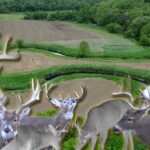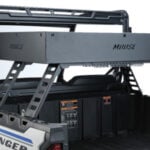LAST UPDATED: June 18th, 2021
A snort-wheeze jolted my senses. Before you could say “buck coming,” I had my bow off its hanger and in my hand. I soon glimpsed pieces of antler through the trees in the shelterbelt. My racing ticker confirmed he was a shooter. As he followed a younger buck – the one he’d just snort-wheezed at – he was beelining for the wide lane I was watching that separated a shelterbelt from an expansive, private-land cornfield.
I drew back, then mouth-grunted to stop him broadside 43 yards away down the lane. When my 40-yard pin settled on his back, I sent my arrow on its way. Within seconds, I heard my South Dakota prize crash in a tangle of brush, my knees knocking together with excitement.
I grew up in a modest home, and no one in my immediate family has ever owned any hunting property. Thus, I knocked on doors to gain access to a mediocre local farm near home as a teenager. I also hunted public lands.
Admittedly, I viewed public lands negatively back then. Although I took some does from them, I struggled to bring down a buck, so I spent most of my treestand time on the private farm. Once I was of age to travel out of state to bowhunt, I knew public lands would be my only feasible option. I mean, landowners to whom I was a complete stranger probably wouldn’t grant me hunting permission. So, that’s how I became a public-land hunter.
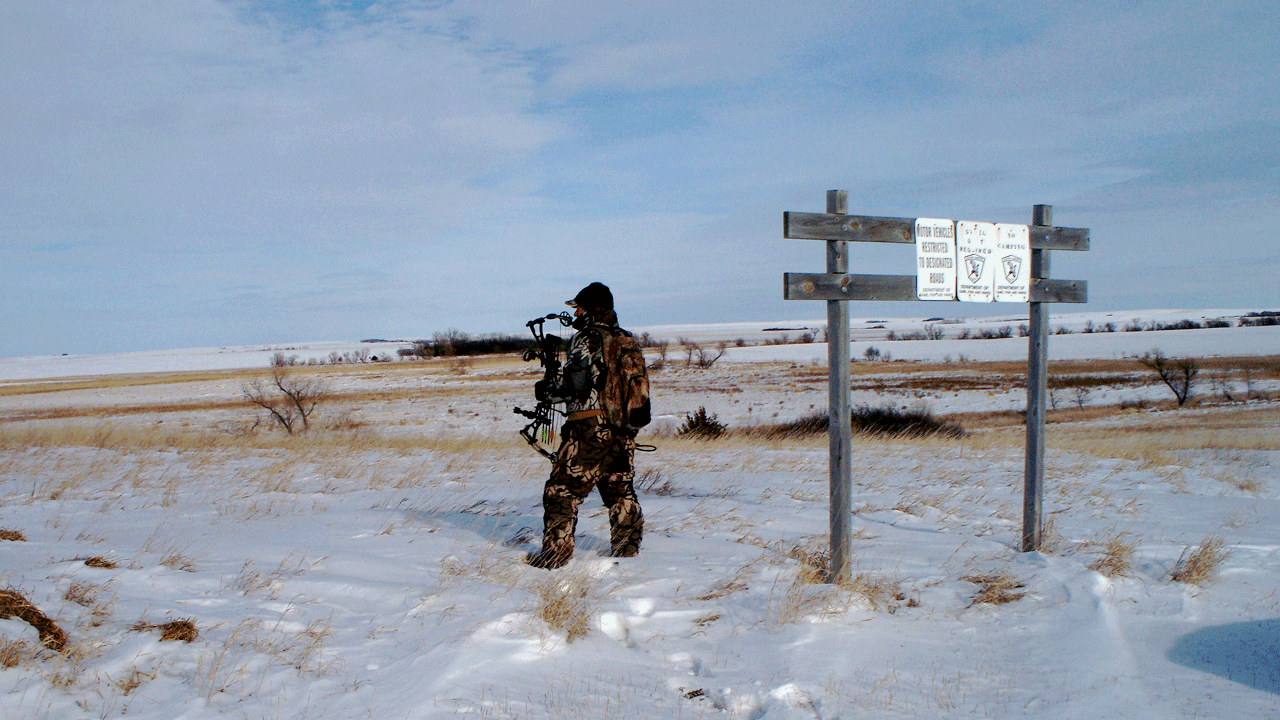
Hunting on public land is difficult, but bowhunters who follow a careful approach can and do succeed. (Photo by Darron McDougal)
Over the years, I’ve taken some pretty decent animals while hunting on public lands, but each year, it seems to get more difficult. Bowhunting is more popular than ever, and so is traveling to bowhunt. Public lands that once received little attention are now highly pressured. As a result, trophy potential has recessed on most of these lands due to nonresident bowhunters shooting mediocre bucks just to say they brought something home. But, they have the right to do that. It just makes trophy hunting more difficult.
Regardless if you’re a “meat” or trophy hunter, I can teach you some things that have helped me nail some quality animals from North America’s abundant public lands. Let’s review.
Hunt Smaller, Overlooked Parcels
The hunt I referenced above occurred on a 160-acre parcel of land. For the five days prior to taking that buck, I’d been hunting larger tracts with zero mature-buck sightings. A local where I was hunting tipped me on to this small parcel, mentioning that big bucks use it during the rut.
A quick, low-impact scouting mission revealed that he was right. Large trees were shredded, and scrapes dotted the shelterbelt. The adjacent private land had a picked cornfield, and does were feeding in it daily. Though not very large, it had all the right things to make mature bucks travel through it.
The point is this: Most hunters gravitate toward the “bigger is better” notion when selecting ground to hunt. This isn’t always true. Don’t overlook the small parcels. They aren’t all great, but mine through them, and you could find a dynamite parcel that others drive right by.
Don’t Leave Because of Other Hunters
During an Oklahoma bowhunt a few years ago, I arrived to find that numerous other hunters were and had been hunting the public property I’d scouted from home on Google Earth.

When you hunt on public lands, you’ll have many unsuccessful hunts. Don’t become discouraged. Rather, view each outing as getting closer to success. (Photo by Darron McDougal)
A bit discouraged, I decided to put my boot rubber to work, and hiked about 2 miles deep to get past where most hunters were focusing.
Despite little deer sign, I hung a stand in what appeared to be a funnel that separated river bottom from prairie. One hunter I’d bumped into earlier had mentioned that the deer tend to bed on the prairies, and the mature bucks would chase hot does up into the prairie before “locking down” with them for breeding. The funnel seemed to make decent sense.
With an appropriate south wind need to hunt the stand, I climbed up the following morning to hunt it. Around 7 a.m., a doe emerged from the bottom and was heading toward my funnel. I grabbed my bow. After all, it was Nov. 10.
I’ll never forget his towering tines and massive body. In fact, I blinked to make sure I wasn’t dreaming. I wasn’t. This was happening. At 50 yards, broadside and obviously not coming any closer, I drew my bow and mouth-grunted to stop him, then launched my arrow. He plowed into a thicket for 20 yards, then all went silent.
My resolve to hunt prime-looking land despite the fact that other hunters were pressuring it, and that deer sign was minimal, yielded my largest buck to date. It felt great to pull that 150-class buck off public land.
Hunt Terrain Features
Public-land deer, especially mature bucks, are wary. It’s rare to see them frequenting state-sown fields and food plots during daylight. Most often, particularly during the rut, you’ll tip the odds in your favor by buckling down along travel corridors and natural funnels that neck deer movement into a narrow place. Deer use these naturally, but these can also be escape routes when other hunters spook deer. If you have little success on/near food sources – even with rubs and scrapes galore – locate some terrain features that funnel deer naturally, and even if they have little sign, they can be productive.
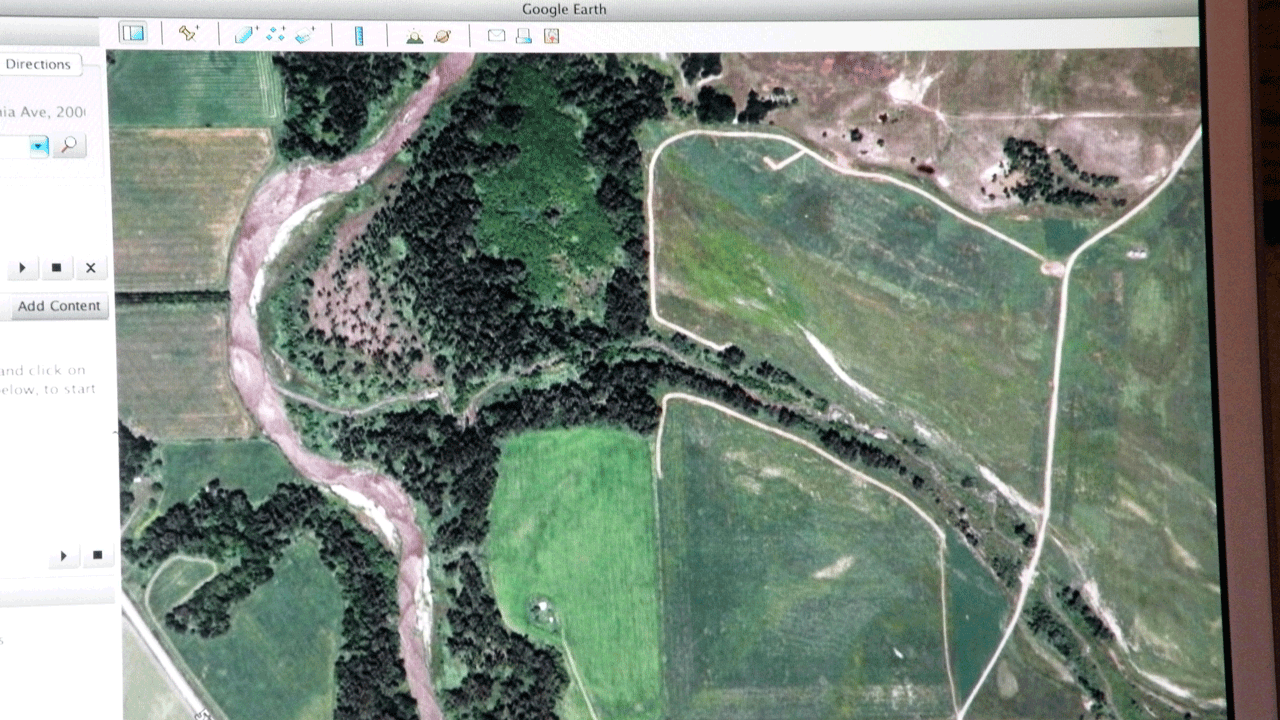
Hunters so often want to focus on food – state-sown ag fields or food plots. These can produce, but often the mature bucks can more successfully be targeted along terrain features that neck down deer movement. (Photo by Darron McDougal)
Pay Attention
So far, this article has been mostly focused on whitetails, but how about some western game to finish out the piece? While chasing public-land pronghorns in Wyoming a couple of years ago in late September, my wife and I were skimming through Walk-In lands to locate a possible blind/decoy setup opportunity. We found a decent place, but all the bucks frequenting the area were dinks. I didn’t really care, though. I just wanted to fill my tag, and put my favorite red meat in the freezer.
We vowed to return the following morning before first light to set up. However, on our way back to town, we spotted a large buck with two does bedded just 200 yards off the main highway. I remembered that we’d driven by them earlier, but hadn’t seen any signs indicating land ownership, thus assuming they were on private land. This time, we specifically noticed there weren’t “posted” signs dotting the fence, so we looked harder than ever as I plugged along slowly just out of view of the ‘lopes. Finally, I saw it: a sign indicating it was state-owned land and open to hunting. Less than 15 minutes later, I decoyed the buck into range and killed him. He scored 71 inches, making him a P&Y qualifier. That day, I learned that if you want to capitalize on public land, you must pay attention.
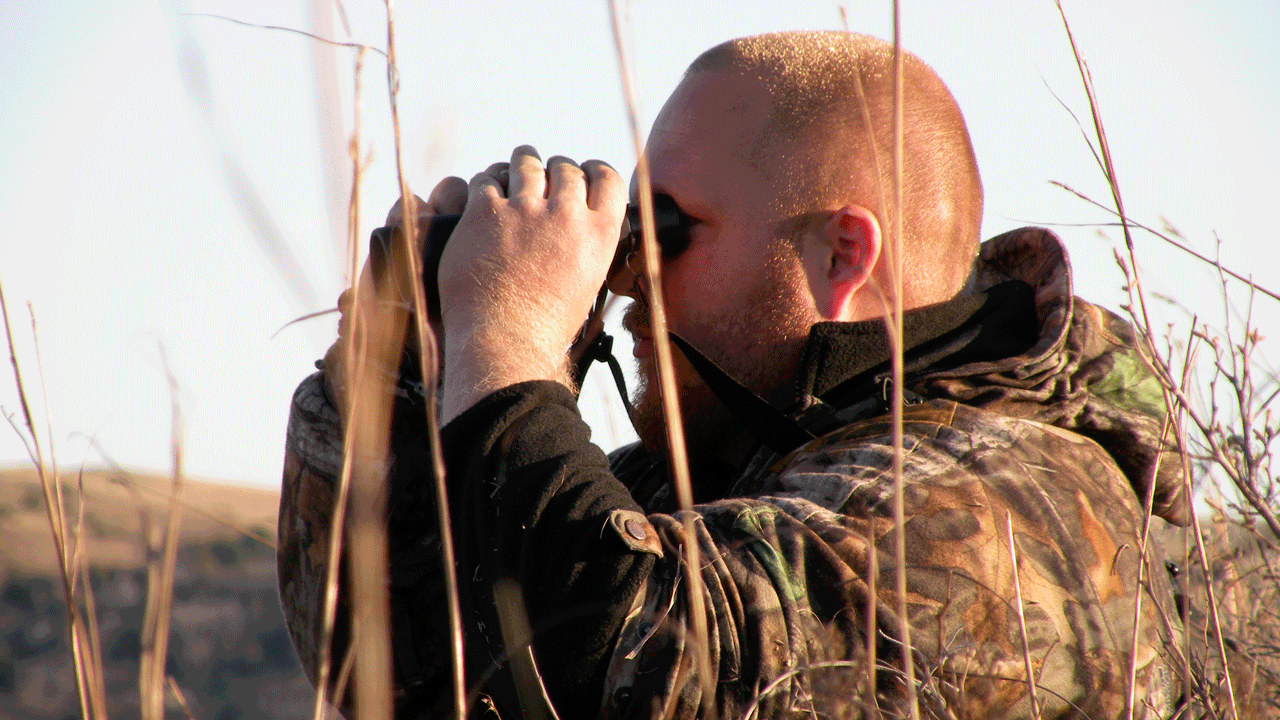
If you pay close attention while looking for new public lands to hunt, or even while looking for new opportunities on public lands you’re already hunting, you’ll find them. That alone can be the key to success. (Photo by Darron McDougal)
Deploy Bold, Clever Tactics
People who own/lease and hunt large farms or ranches can often wait until timing and conditions are optimal to hunt. When I travel to bowhunt any species on public lands, I don’t always have that luxury. I’m sure you don’t either. So, when time is running out, and you’re clutching an expensive nonresident license, sometimes you have to just try something out of the box. Plus, if you only have a day or two left, you really have nothing to lose by unleashing an all-or-nothing approach.
The pronghorn buck I mentioned above responded to a decoy I made from cardboard, spray paint and Gorilla tape. With three days of archery season remaining, the $5 decoy was just the ticket.
On another occasion while bowhunting deer in September in Nebraska, I hung a stand I was confident would produce a mature buck. Unfortunately, I studied the forecast back at the motel, and realized the wind wouldn’t cooperate during my seven-day hunt. So, I made the bold decision to hunt the stand on a poor wind, spraying down with a scent eliminator every half an hour to reduce as much scent as possible. By the end of shooting light, I’d arrowed a 135-inch public-lander from 30 yards straight downwind of my treestand. Again, sometimes you just have to make aggressive decisions in order to score.
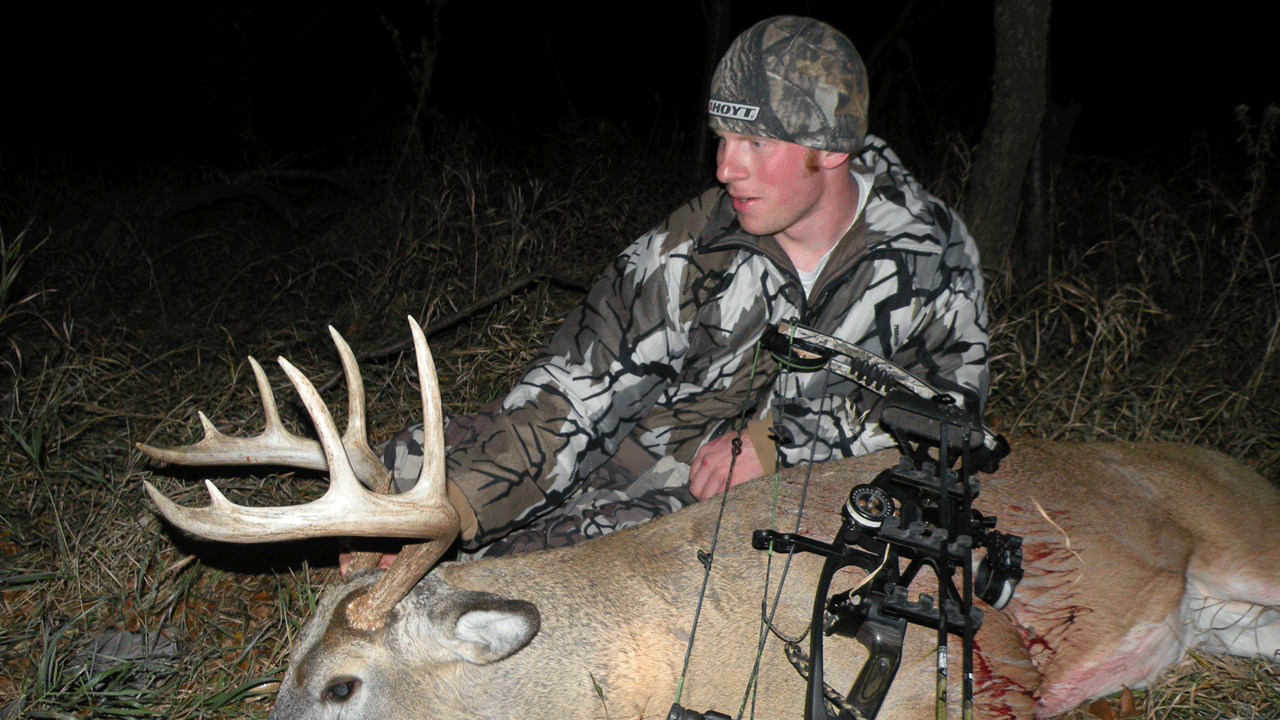
The author nailed this good public-land buck by trying a small parcel after hunting unsuccessfully for five days on larger parcels. Sometimes, hunters drive right by small parcels, and that can make them more productive than larger parcels due to lack of pressure. (Photo by Brad McDougal)
No Greater Feeling
As I said earlier, bowhunting public land successfully is becoming increasingly challenging. However, each time I score, I’m reminded why I do it. I’ve taken dozens of animals from both public and private lands, but the public-land trophies are the ones that remain most special in my cranial file of bowhunting memories. The work it takes to succeed is painstaking, and that is why there is no greater feeling than pulling a quality animal from land that anyone can hunt. Heed my five tips, and you could walk away with a pile of public-land red meat and an ear-to-ear grin.

 By
By 

